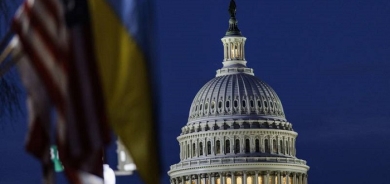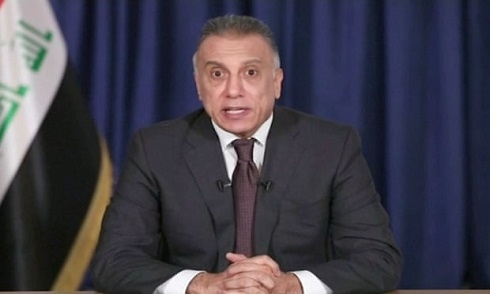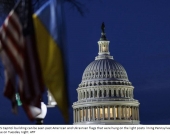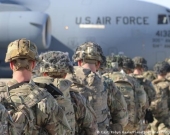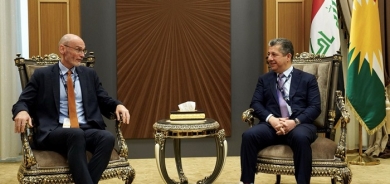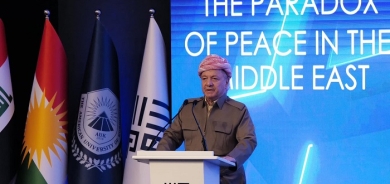The identity politics of displacement in the Middle East
March 4, 2015
From Media
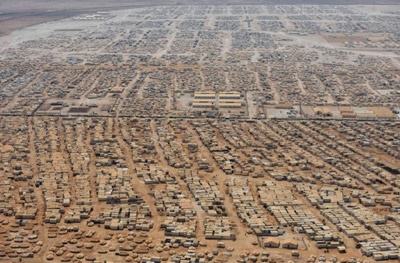
This post is part of the “Rethinking Nation and Nationalism” symposium.
Amnesty International recently released a scathing report that took Western countries to task for their failure to address the sharp uptick in human displacement in 2014. No part of the world has been more affected than the Middle East and North Africa (MENA), where recent upheavals have spawned the region’s largest forced migration crisis since the exodus of hundreds of thousands of Palestinians during the First Arab-Israeli War in 1948. Between 2008 and 2013 alone, the number of refugees and internally displaced persons (IDPs) in the Arab world roughly doubled, propelled by the 2011 uprisings and violence in Syria, Iraq, Libya, Yemen and the Palestinian territories. MENA is now the main region of origin of refugees worldwide, and contains nearly one-third of the global IDP population. This surge mirrors a broader, and troubling, global trend. Despite a steady decline in the incidence and lethality of armed conflict, the number of people forcibly displaced by violence has swelled to levels not seen since World War II.
While there is a discernable shift in global attention toward forced displacement, this issue remains largely neglected by scholars. In the Middle East, this growing feature of contemporary politics is not only an urgent concern for humanitarian agencies: Examining displacement has important implications for enhancing our understanding of the region’s shifting identity politics. Since mass involuntary movements of populations have long been a catalyst for political and social transformation – and are linked to an array of security threats, from conflict spillover and terrorism to the spread of infectious disease – it is critical to consider how the most recent waves of displacement will shape the future landscape of the Middle East.
Population displacement has a unique legacy in the Middle East, which claims the world’s largest protracted refugee situation (the Palestinians) and the greatest gaps in legal protection for forced migrants, as most countries are not parties to the UN Refugee Convention. Yet outside the voluminous literature on Palestinian refugees, displacement remains relatively understudied in the Arab world. Most research is refugee-centric and focuses on encamped populations, even though the number of IDPs in the region now nearly doubles the number of refugees, and the vast majority of the displaced – including an estimated 70 percent of Syrian refugees and 95 percent of IDPs in Yemen – do not live in camps or formal settlements.
Meanwhile, displacement patterns in MENA have become increasingly complex. More countries are experiencing displacement than at any point in the past 50 years (see below). Syrians, Iraqis, Libyans, Yemenis and Palestinians have been uprooted multiple times and across multiple borders. The per-capita refugee populations of Lebanon and Jordan are now three to six times greater than any other country in the world, placing significant strain on these states’ economies, social services and local communities.
Political scientists tend to overlook these trends, despite the fact that forced displacement engages fundamental questions surrounding the organization and consolidation of political authority; the very process of state formation has been described as a “refugee-generating process.” One reason for this neglect may be the tendency to treat displacement as an inadvertent byproduct of violence and instability, rather than a strategic tool. But recent research by Kelly Greenhill, Abbey Steele and Yuri Zhukov has demonstrated that the uprooting of civilian populations is frequently orchestrated, manipulated and sustained by political actors.
In the Middle East, displacement has been commonly employed as a weapon of war and a tool of statecraft. According to data that I have collected from media reports, historical records and academic studies, military forces and other armed groups have strategically uprooted civilians in at least 40 percent of all armed conflicts in the region since 1945. Although “cleansing” territories of religious rivals has become a popular tactic for sectarian militias in Iraq and a cornerstone of the Islamic State’s bid to erect a quasi-state, in a vast majority of cases, it is the state that perpetuates these displacements. The Turkish military has systematically depopulated Kurdish villages as a counterinsurgency measure against the Kurdistan Worker’s Party (PKK). Beginning in the 1970s, “Arabization” campaigns, which expelled ethnic minorities and resettled Arab families in their place, became a hallmark of Baath Party rule in Iraq and Syria. Saddam Hussein resurrected these measures after the first Gulf War, responding to Kurdish and Shiite uprisings by uprooting entire communities, including residents of the Hammar, Amarah and Huwizeh marshes. In Syria, President Bashar al-Assad’s forces have bulldozed neighborhoods to force civilians out of insurgent-held areas, adopting a strategy used in the 1980s by his father and then-President Hafez al-Assad, to put down revolts by the Muslim Brotherhood. The Israeli government has routinely expelled Palestinians from their homes in the West Bank. And in recent months, the Egyptian military has forcibly displaced thousands of Sinai residents to establish a buffer zone with the Gaza Strip aimed at stemming the influx of arms and militants across the border.
The use of these measures has enabled governments (and aspiring governments) to assert control over contested areas, monitor restive populations and engage in social engineering as a part of state-led development. Displacement has been more than an expedient military tactic; it has been an essential state-building instrument. States not only expel civilians from an area, they also frequently relocate them to designated settlements elsewhere. Inducing population movements helps leaders consolidate their authority while achieving a critical requirement of modernization: The physical concentration of the populace into regimented units, rendering even the most unruly or inaccessible territories “legible,” in the words of James Scott.
These displacement strategies are nothing new. Population transfers have been a feature of territorial acquisition, military domination and imperial subjugation since antiquity. Yet as colonial rule and wars of conquest have become increasingly obsolete, the role of political actors in intentionally triggering displacement is often overlooked in the modern era. These strategies differ in type and intensity: Authorities not only expel civilians from an area, they also relocate them to designated settlements or monitored makeshift camps elsewhere. Therefore in many cases, the strategic displacement of civilian populations are not static, one-off events, but dynamic processes whereby political actors continuously seek to regulate people’s physical locations and movements. No matter how officials justify these measures, they rarely provide the resources needed to adequately address their humanitarian consequences.
Many Middle Eastern scholars, most notably Edward Said, have captured the essential links between displacement and identity politics. Nationalism – the pursuit of recognition and rights by self-defined collectives – is often cited as a driver of forced migration, but as Said and others have shown, is it also a consequence of it. These connections remain mostly unexamined outside the context of Palestinian nationalism, for which dislocation and dispossession have become critical features. But the Palestinians do not appear to be a unique case. Scholars have recognized the role of displacement in constructing Kurdish nationalism in Turkey and Sahrawi identity in North Africa. Since identities tend to be territorially anchored, being violently uprooted can lead people to cling to their homelands, and promote an exaggerated sense of group solidarity based on the very characteristics by which individuals were displaced. Refocusing attention on how displacement is weaponized within the contemporary context can help us better understand the impact of displacement on identity politics in two important ways.
First, displacement highlights the role of the state and its agents in reifying, politicizing, and institutionalizing national and subnational identities. According to Dawn Chatty, the Ottoman Empire’s orchestrated expulsion and resettlement of problematic or undesirable groups made forced migration “the characteristic mark of nationalism” across much of the Middle East. Scholars tend to perceive the development of national consciousness as a bottom-up, rather than a top-down, process. But as states have increasingly “monopolized the legitimate means of movement,” the ways in which authorities create and respond to forced migrations play a pivotal role in constructing nationalism. For displaced Palestinians, the policies and actions of the Israeli government, the discriminatory treatment of refugees by Lebanon and Jordan and the management practices of U.N. relief agencies have all enhanced the distinctiveness and political salience of Palestinian identity.
Second, focusing on the state’s role in inducing and managing displacement draws attention to the material drivers of identity politics. Studies of nationalism often emphasize its subjective and ideational dimensions, with less attention paid to the ways in which nationalism is rooted in laws, policies and institutions. Forced migration activates nationalism by attaching specific rights, resources and recognition to particular ethnic, sectarian or national affiliations. For all the talk of Kurdish transnationalism, border restrictions, visa requirements and citizenship benefits preserve salient differences between Iraqi, Syrian and Turkish Kurds.
Displacement therefore remains an underutilized prism for observing the dynamics of identity production in Middle Eastern politics. It also challenges popular narratives surrounding the origins of sectarian conflict in the region. Many observers claim that Arab autocrats suppressed long-standing subnational divisions only to have them erupt after these rulers were overthrown or undermined. This obscures the fact that measures undertaken by these regimes, particularly the strategic uprooting of civilian populations, were instrumental in deepening these divisions and essentializing the identities attached to them. While frequently exercised under the auspices of national unity, these displacements had the opposite effect: They aggravated, rather than subdued, patterns of sectarian or ethnic dominance.
Likewise, the more recent episodes of forced displacement appear to be intensifying subnational rivalries in Syria, Iraq and Yemen. By fragmenting society and categorizing people not as citizens but members of homogenous ethno-sectarian enclaves, displacement has inhibited attempts to develop a national identity. These processes are abetted by the fact that the primary providers of humanitarian supplies and public services for displaced communities are faith-based NGOs and local religious, ethnic and tribal groups that directly or indirectly cultivate dependency on subnational affiliations, particularly among population displaced within their countries – who lack the international legal protections afforded to refugees.As Melani Cammett has shown, the provision of welfare can engender or reinforce community solidarity. Thus the activities of these aid groups could help augment or preserve the ethno-sectarian identities of displaced populations, just as the services provided by the U.N. agency for Palestinian refugees have played a pivotal role in reconstructing Palestinian identity.
Yet we should refrain from taking these developments as evidence that religious or ethnic identities are bound to overtake national ones in a region purportedly beset by vanishing borders. Despite the seeming predominance of subnational affiliations, the salience of de jure nationality – nationality based on legal citizenship – will persist as states increasingly lay claim over the regulating techniques of the politics of movement. More research is therefore needed on the impact of different forms of displacement on the production, contestation and institutionalization of political identities. Previous studies have demonstrated that displacement can consolidate or disperse identity among exiled communities, from so-called refugee warriors to diaspora communities. But given that civilian displacement within countries has become far more prevalent than displacement outside of them, it is critical that researchers focus on more localized patterns of displacement. Is being uprooted within, as opposed to across, state borders less likely to rouse nationalist sentiments? Do different processes of exclusion, assimilation and integration shape identity construction for the internally displaced via-à-vis refugees? These questions have profound importance for grasping the impact of population displacement on reordering the Middle East. If the twentieth century was the “century of the refugee,”then the twenty-first is shaping up to be the century of the IDP. Scholars must keep pace with these trends.
Adam Lichtenheld is a PhD student at the University of California, Berkeley, where his research focuses on the use of population displacement as a tool of statecraft, U.N. peacekeeping and the links between displacement, nationalism and violence. He is a contributor to UN Dispatch and serves as a consultant for implementers of USAID and other international development programs.

